A Vertical Flight Display is a courtship display of the male Northern Mockingbird. According to Cornell’s Birds of the World the display is:
“given from a high singing perch. A singing male jumps upward, flaps his wings once or several times, ascends a meter or two above the perch, and then parachutes down, wings open, onto the same or a nearby perch. White wing patches are conspicuous during the display, and the bird sings continuously”
A couple of days ago I found a male Northern Mockingbird using one of the pavilions on Antelope Island as his “high singing perch” while he repeatedly performed Vertical Flight Displays. Four times I attempted to document his displays photographically, with varying degrees of success.
My results are below. A couple of these photos aren’t very sharp but they’re plenty sharp enough for documentation purposes.
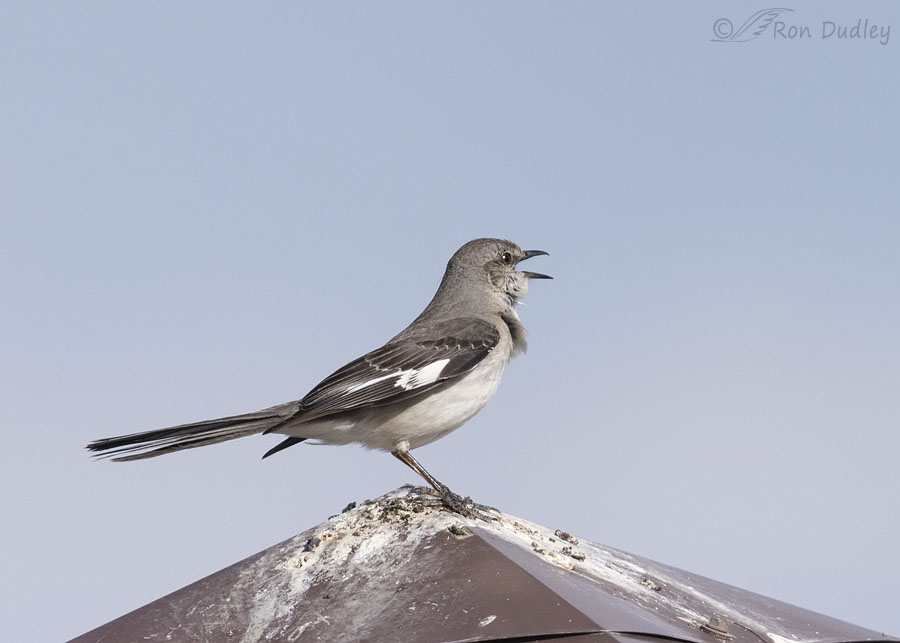
Display #1:
At first I had no idea that he was displaying. I just thought he was singing atop the pavilion so I wasn’t expecting or prepared for his performance. As a result, in this first display I only got…
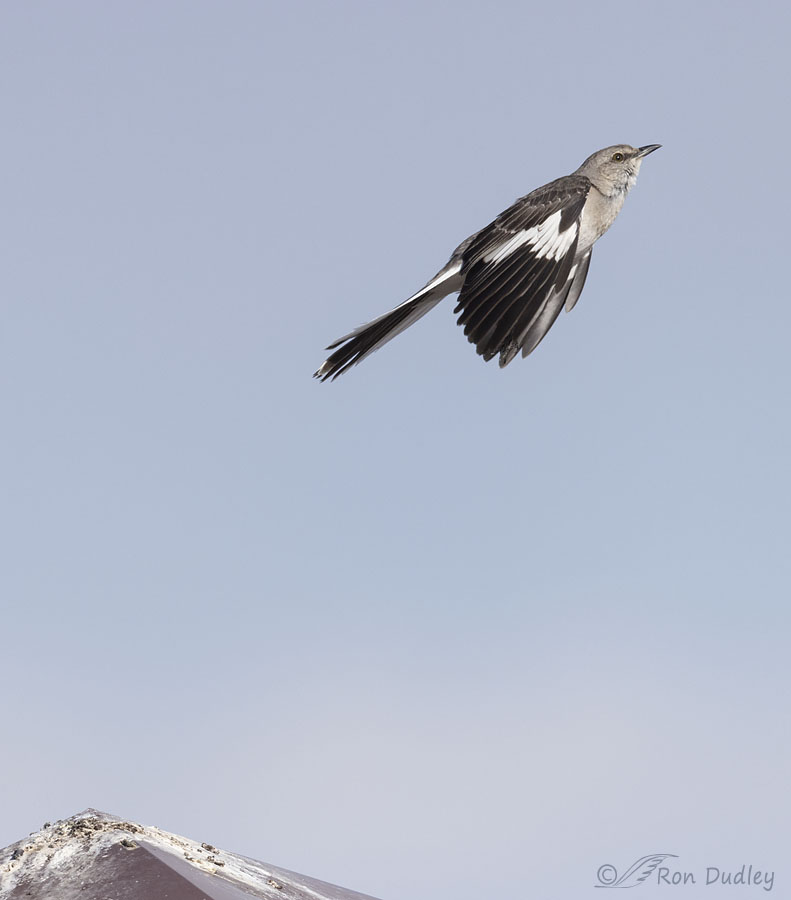
one photo of him during the entire display – this shot taken soon after takeoff from the poop-covered pavilion.
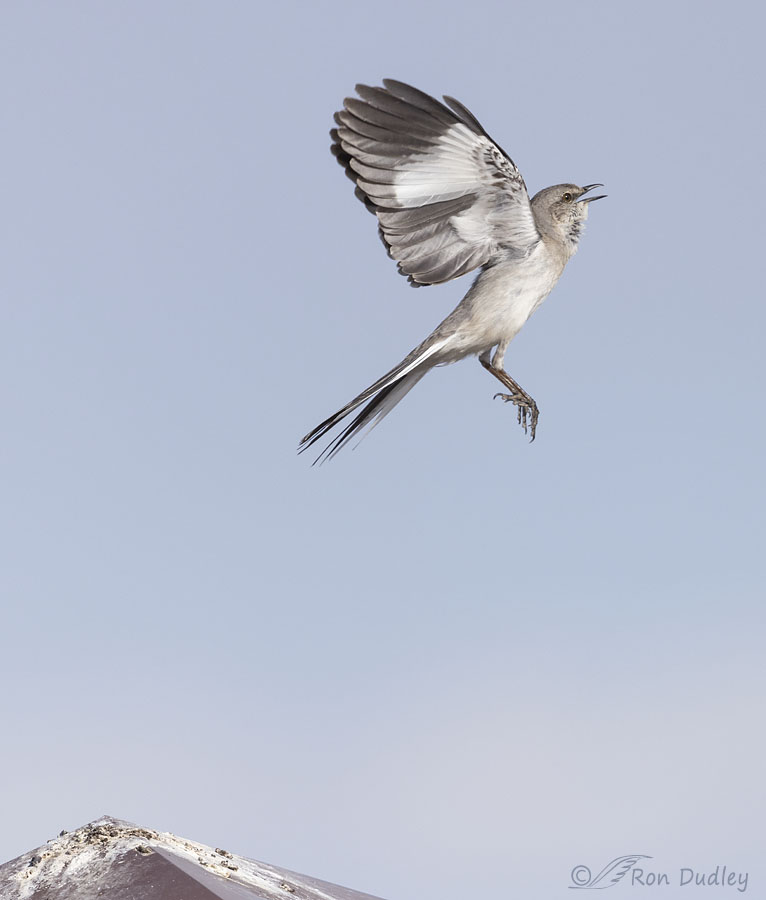
Display #2:
This second time I did a little better, but not much. This time I kept him in frame for…
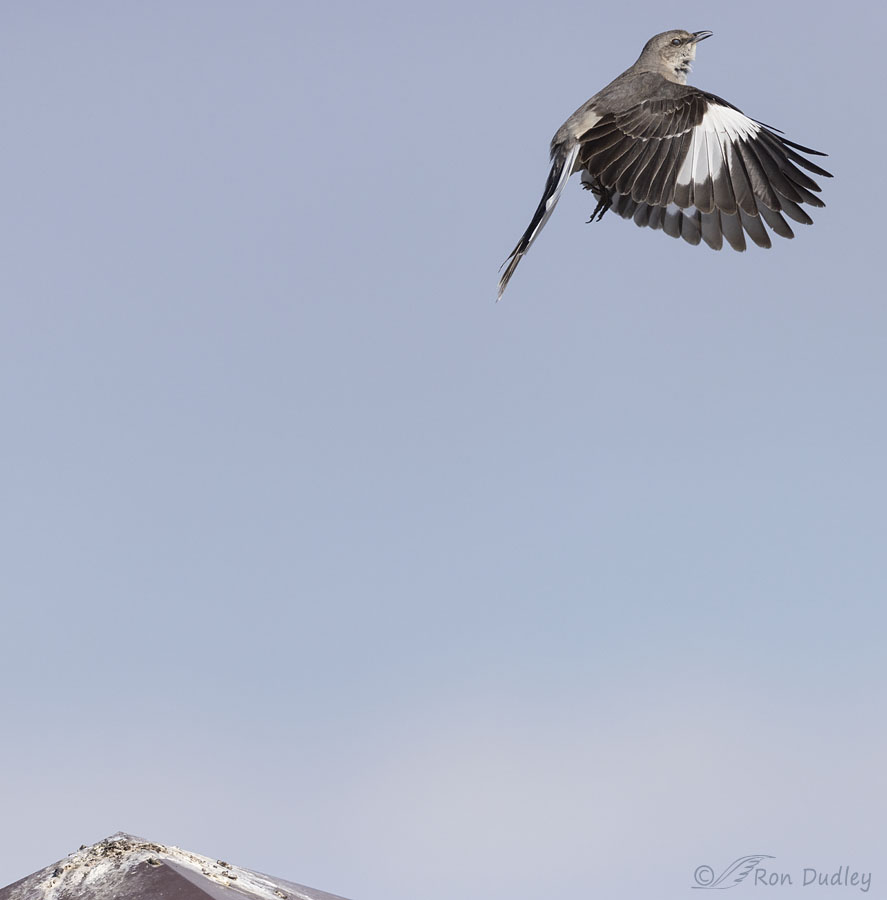
two photos during his performance. Notice that, as described by Cornell, he was usually singing while displaying (most evident in the previous photo).
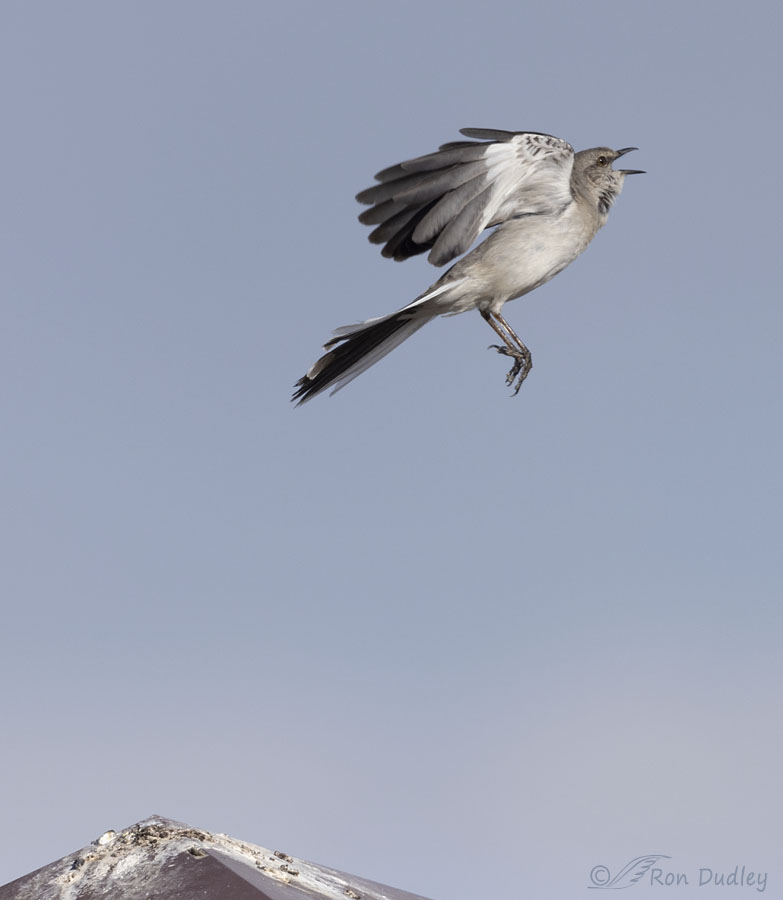
Display #3:
I had my best luck with this third display.
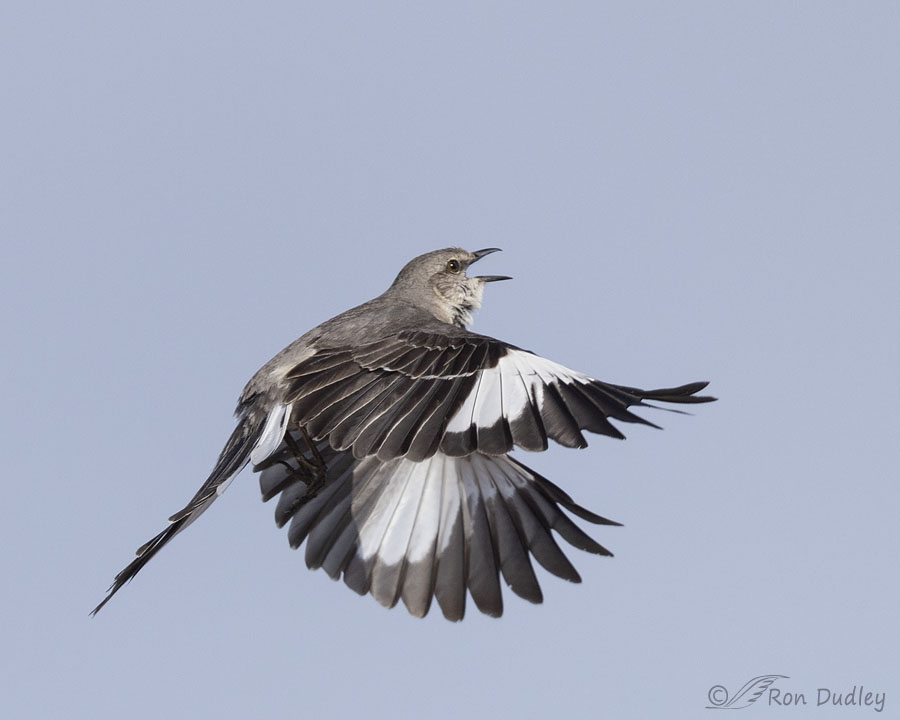
By now I’d figured out which angle to follow him with my lens that would give me the best chance to keep him in frame for longer.
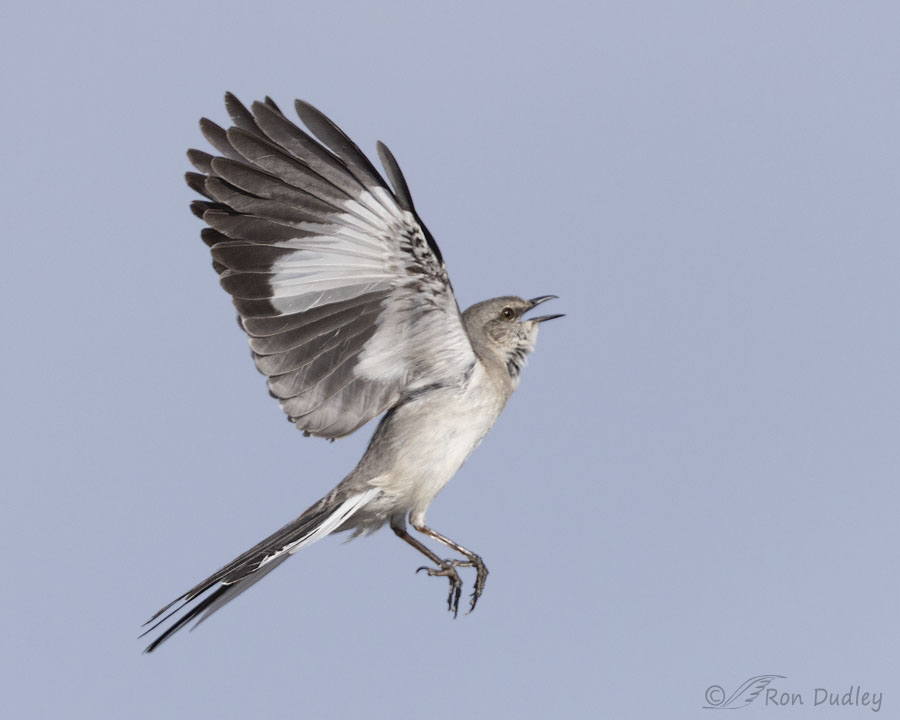
Still ascending at a steep angle as he was calling.
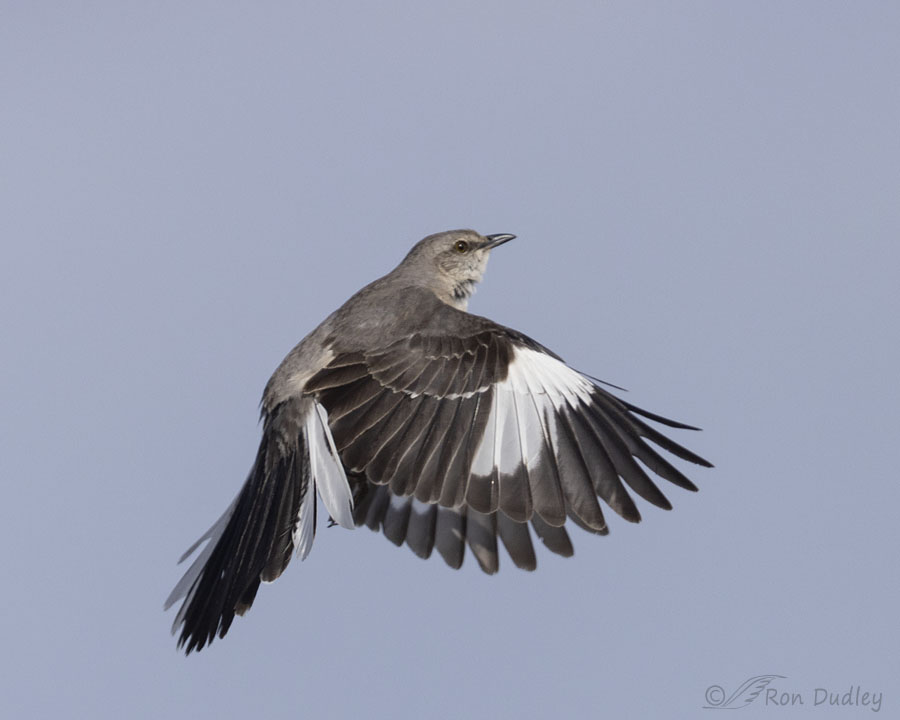
This is the last shot I got of him as he was going up. After this he rolled over and…
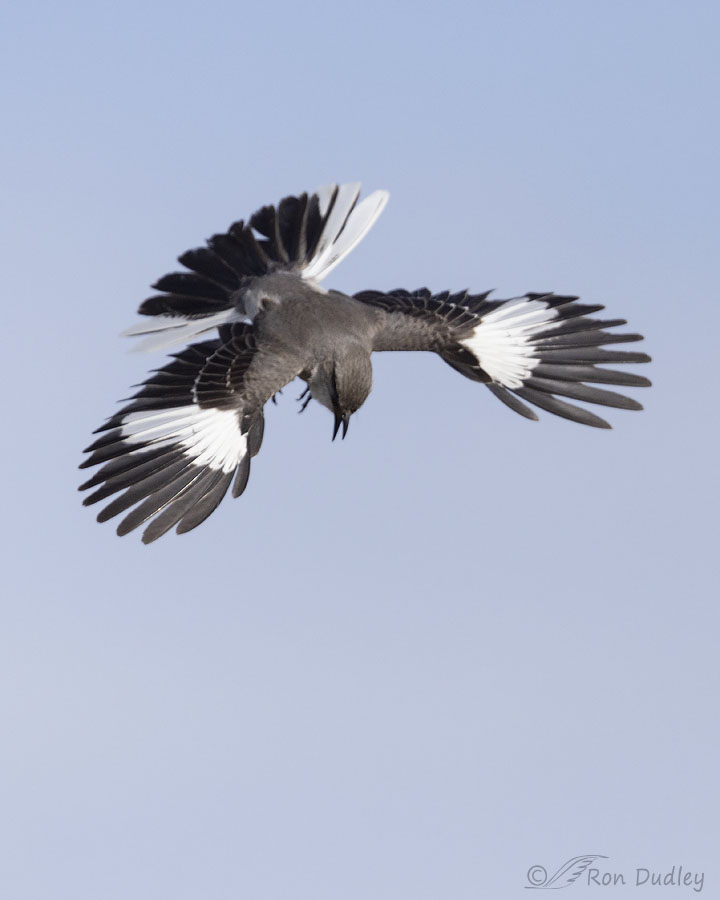
then I managed to get him in frame again as he…
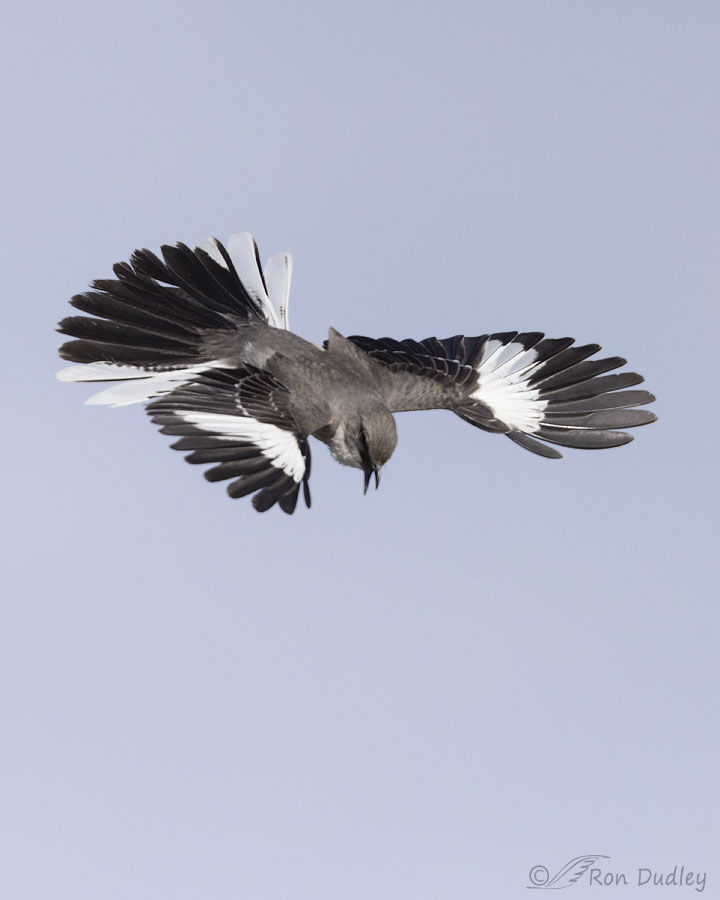
parachuted back down to…
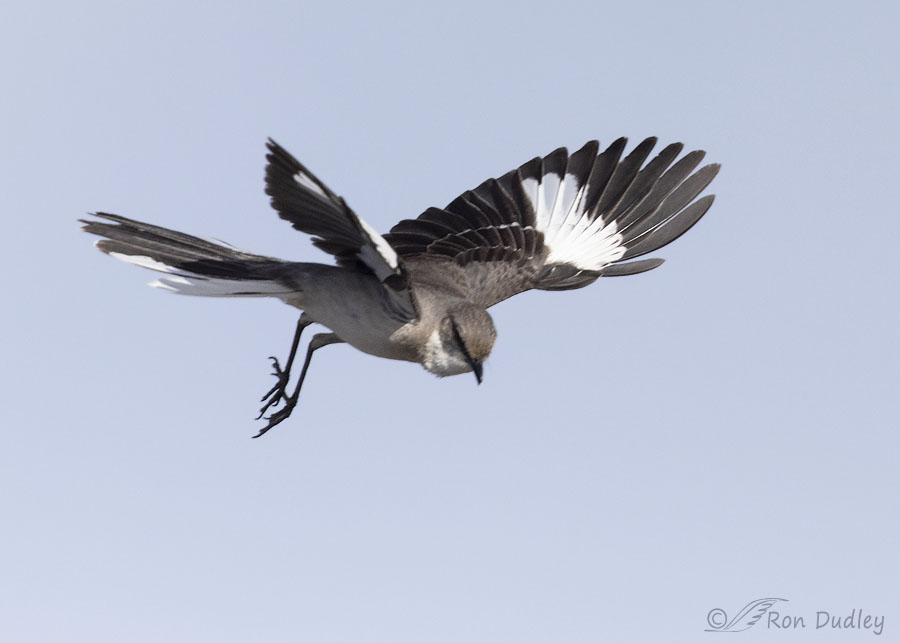
his original pavilion perch. But this time, as usual, I lost focus on him before the pavilion came into the frame and he landed on it.
At this point he did something different. He flew to another singing perch behind me, one that I couldn’t see. But I could hear him singing back there so now I had a new goal. I figured that he’d eventually return to the first pavillion and perform from there again so if that happened I hoped to capture him landing on it.
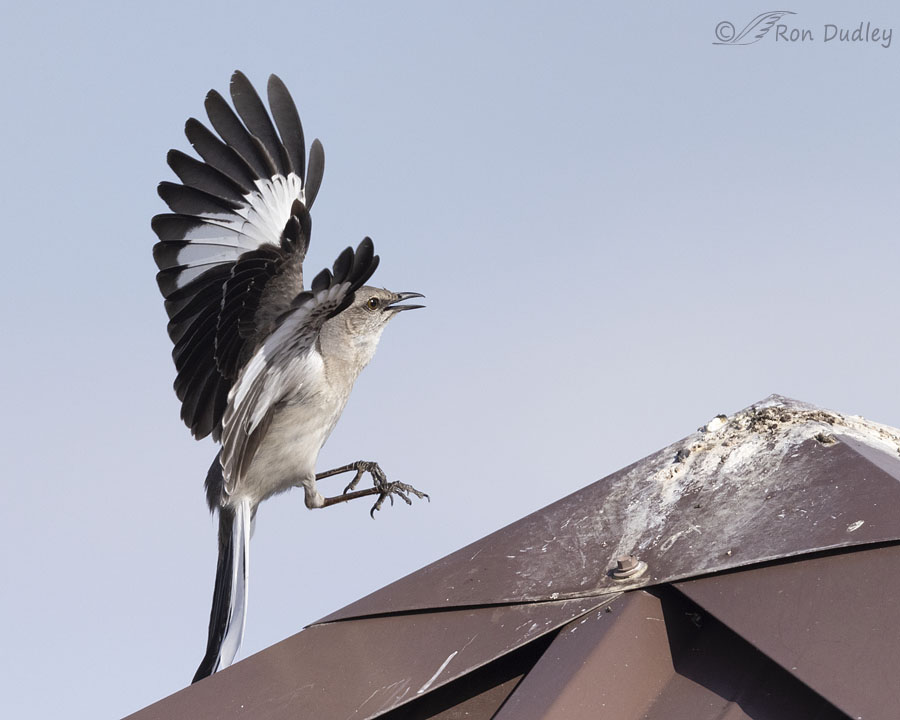
And I got lucky. Here he’s landing after a horizontal flight to the pavilion rather than after a Vertical Flight Display, which explains why he’s coming in from the side instead of from above.
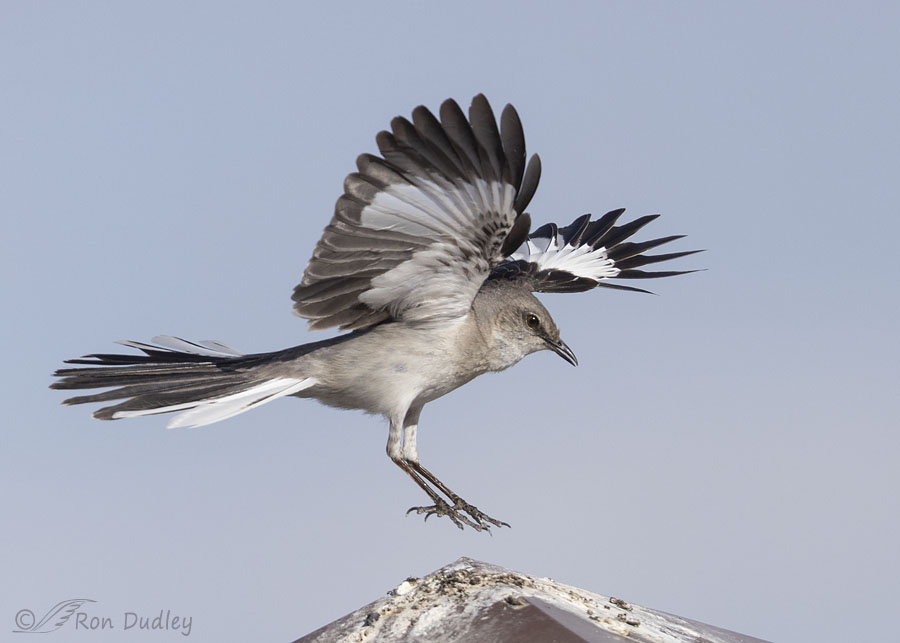
Display #4:
I only caught him landing after a display a single time and this is it. This is the photo I posted yesterday. I did a poor job on this last display because I missed his vertical takeoff and never got him in frame and in focus again until just prior to landing.
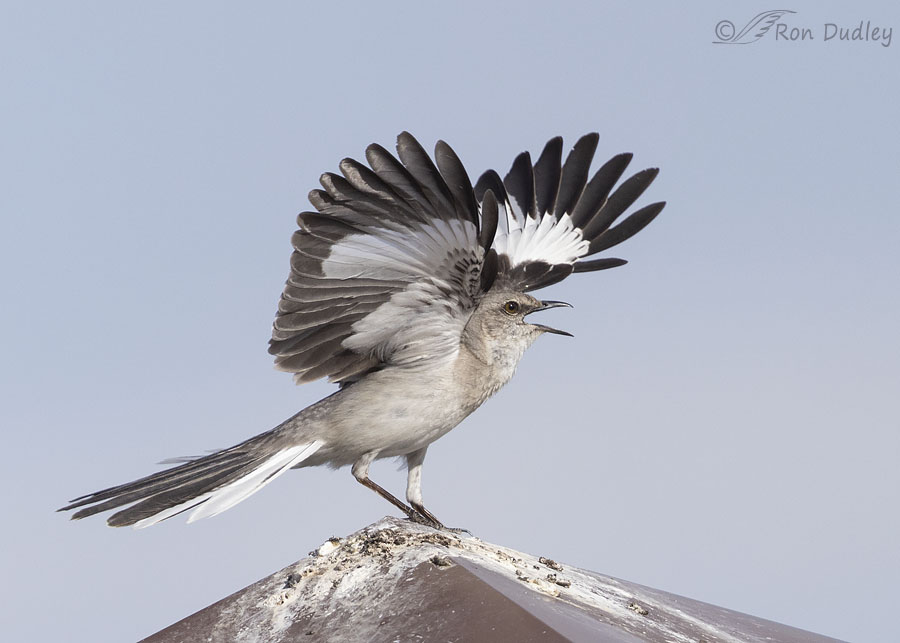
Immediately after landing he seemed to celebrate his performance by raising his wings and singing with all the enthusiasm he could muster.
Some observations about his performance and mine:
- I never did see the presumed female he was performing for but that doesn’t surprise me. During his performances I could hear at least one other singing mockingbird in the area.
- Cornell’s description of the behavior says that the male only “ascends a meter or two above the perch” but this guy was going at least 2-3 times higher than that, which didn’t help with my success rate.
- I’m sure I’d have had better luck keeping him in frame if I hadn’t been quite so close (something I had no choice about). His vertical flight was abrupt and quick and very difficult to follow with my lens. If I’d been further away I believe I’d have done a better job of it.
I’ve posted photos of this fascinating behavior before but each performance (by the bird and by the photographer) is different so I thought these photos deserved to be seen too.
Ron


Great series. I have watched one doing this on an exterior light at our condo in St George. Interesting tidbit he seemed to have a female on a nest in the tree right by our balcony. He would catch bugs from the lawn and take them to the nest area, his mate would also leave the nest from time to time and hunt for insects on the lawn.
Ron,
So VERY Cool!
Stephen
Thanks, Stephen.
I LOVE the exuberance you have captured. And how I would love to see and hear it for myself.
Megathanks. Again.
Thank you, EC.
This is a fabulous sequence, have not witnessed it yet — or perhaps didn’t understand what I was seeing — but now will really be on the lookout. Thanks for making the effort to record it!
I hope you get to see it sometime, Chris. It’s very distinctive and flamboyant so I’m sure you’ll recognize it.
He’s quite the enthusiastic and athletic fellow. I really hope some lady mockingbird takes notice.
You are definitely a skilled photographer, Ron. Not many could have documented so much of the display so well. Lucky you to be able to observe him and lucky us that you shared your observations. What a wonderful way to spend some time on this planet!
Lucky you to be able to observe him and lucky us that you shared your observations. What a wonderful way to spend some time on this planet!
“What a wonderful way to spend some time on this planet”
That’s what it comes down to, isn’t it Marty. Our time here is short and for folks like us, birds make the ride so much more enjoyable.
Super series!
Charlotte Norton
Thanks, Charlotte.
I appreciate the effort it took to make this series a perfect perch-to-perch cycle. As you often show, this is one of those birds that are plain-looking until they’re in flight. I’d love to see the courtship display, but not likely here: apparently one over-wintered in the neighborhood in 1964, and the other sighting was about 30 miles south of here about 10 years ago.
Lyle, I was unaware that you don’t have mockingbirds in your area. That’s too bad, they’re really neat birds.
Wonderful “captures”, Ron – wouldn’t have wanted to do the processing part given the difficulty involved catching the bird in the positions you wanted! Heard more than seen here and “seasonal”.
Heard more than seen here and “seasonal”.
” wouldn’t have wanted to do the processing part”
Judy, the selection and processing took a good long while, as you point out. I’m thinking my next post will be much shorter…
Outstanding job Ron to be able to follow and capture all of this remarkable performance. Very impressive. I really like the very last photo with the upraised wings and his obvious satisfaction with his performance.
Thanks, Everett. I agree with you about that last photo.
If I were a female mockingbird I’d fall for such a handome healthy guy! Great shots!
Point well taken, Elise. And thanks.
Your photos bring out the unique beauty of every bird you photograph.
Take Care,
Kaye
Thank you, Kaye.
Love this series, Ron! I have a nesting pair of Mockingbirds in my yard, plus a nesting pair at work. My work bird performs this display on the top of the parking lot lights, greatly impacting my productivity! Last week he moved to a nearby tree and mimicked Eastern Bluebird, Blue Jay, Eastern Phoebe and Great-crested Flycatcher in succession. Always a joy to hear!
“greatly impacting my productivity!”
That brought a smile, Diane. I’ll bet!
Love the bird’s dance and love the photos! I’ve tried to capture Mockingbirds doing “their thing” many times – with varying degrees of success, so I know how hard it is to get a photo at just the right moment with everything in focus!. Kudos!
Thanks, Joanne. Yes, I think it takes a bird photographer to fully appreciate the challenges of capturing their displays well.
Thank you. I had not been aware of this behavior and loved observing. I now live in Florida and the Mockingbird is the state bird. Maybe I may observe this one day.
Laurie, at some point I hope you get to see their displays. It’s definitely worth the price of admission.
Thanks for the photos Ron. Just love these birds. They are year-round residents where I live. This time of year my wife and I enjoy their all night concerts, and one of our favorite things to see on our morning walks is this very behavior you have documented in your photo essay. It’s a delight to see the same birds each morning atop their favorite advertising their availability. We will pause to watch their Vertical Flight Display. It always brings a smile to our faces. There is this certain something about this display that is both beautiful and whimsical.
Thanks for these shots. You have captured moments of this bird ballet for us to admire the graceful exuberance of these fine creatures.
“Mockingbirds don’t do one thing but make music for us to enjoy. They don’t eat up people’s gardens, don’t nest in corncribs, they don’t do one thing but sing their hearts out for us.”
I can tell you appreciate mockingbirds, Michael. A lot. So do I, even though I’d never seen one (that I know of) until I started visiting Antelope Island regularly about 11 years ago. And I never noticed their displays until years after that.
I, too, loved the Annie Dillard quotation– to think that he’d go thru such a performance, even if he wasn’t sure he had a female around, to appreciate
his repeated effort –sort of like the photographer who keeps showing
up, many miles away from home, every morning, hoping for a good opportunity.
Both you and this particular nightingale reminds me of that old Hertz slogan,
“We try harder”……
You’ve got that right, Kris. Whether I succeed or not it usually isn’t for lack of trying.
I think Kris said it all. I would have gladly traded some sharpness for that gorgeous wing display. Though, knowing you, I am sure that at some point you will get the best of both worlds. I can almost hear them singing. Well, done. And thanks for sharing the experience.
Granny Pat, I tried to find a link to a sound clip I could include in my post. But mockingbird calls are so varied I couldn’t find one that matched the song this bird was singing.
This is one of my favorite behaviors to observe. I agree that they often ascend more than one or two meters: sometimes far more. This quotation from Annie Dillard is a bit long, but I’ve always loved it, too. Like your photos, it captures the sheer beauty and interest of this behavior:
“…The mockingbird took a single step into the air and dropped. His wings were still folded against his sides as though he were singing from a limb and not falling, accelerating thirty-two feet per second, through empty air. Just a breath before he would have been dashed to the ground, he unfurled his wings with exact, deliberate care, revealing the broad bars of white, spread his elegant white-banded tail, and so floated onto the grass. I had just rounded a corner when his insouciant step caught my eye; there was no one else in sight. The fact of his free fall was like the old philosophical conundrum about the tree that falls in the forest. The answer must be, I think, that beauty and grace are performed whether or not we will or sense them. The least we can do is try to be there.”
Loved the quote, Shoreacres. And this was the perfect ending – “The least we can do is try to be there.”